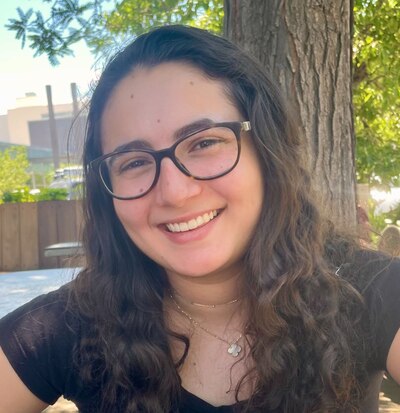Given the world we live in, my two core principles as a Gen Z educator are frequently in tension. Number one, be authentic. Number two, always have hope.
Middle schoolers can sniff out insincerity in an instant. In my experience at Aurora Science & Tech Middle School, I am most successful as a teacher when I am being my authentic self — whether it be running around my classroom to demonstrate kinetic energy or dancing badly to map out the pathways of the nervous system.
Kids often ask insightful questions that are hard to answer. So how do I respond when they ask what I think will happen to the climate in the future, or why people bring violence into schools, nightclubs, and malls? When my authentic self only has pessimistic answers to these questions, it’s hard to know what to say.

When, during remote learning, my STEM class talked about water consumption, one student came off mute to voice the futility of saving water, remarking that it would only be useful “if there was a planet left to save.” I didn’t know how to respond, especially since he was speaking to me through a computer screen when we should’ve been sitting in our classroom.
The fact that we were online for school for over a year — even when restaurants and bars reopened their doors — said a lot about what our country valued. Was it any surprise that older generations had long seen climate change as too far off in the future to matter?
Teaching is commonly branded as an act of hope, an investment in those who will be able to transform the world for the better. But if I’m being honest, I’m not as hopeful as I’d like to be, though that’s not a reflection of my students or their abilities. My doubt lies with current actions that may preempt younger generations’ opportunity to make a better world.
By the time we finally returned to full in-person learning in August 2021, many of my students had lost faith in systems that were supposed to protect them. So had I. As the rules for quarantine changed every week, I questioned decision-makers more and more. “Why are we doing this?” students would ask about inconsistencies in COVID policies. For example, length of quarantine only shortened with the rise of cases due to the Omicron variant. Masked students couldn’t cheer on friends at sporting events nor attend field trips to complement their learning, even though they sat close to one another to eat lunch unmasked daily. The best answer I could give would be that I was only following the rules passed down to me, mostly from people who did not spend their days in classrooms. Sensing my frustration, one student replied that I should be a principal one day, and I told her that maybe I would be.
More than a year on, with the worst of the pandemic likely over, I am even more disillusioned. After a summer when courts stripped women’s rights and showed increased leniency for oil and gas companies, and schools and libraries increasingly banned books, I felt more motivated in my work and also more unsure that it would be enough. My average students are three or more grade levels behind in reading and math. My current students attended third and fourth grades online, meaning their social-emotional development lagged. Solving for all of it seems impossible.
Many of my students had lost faith in systems that were supposed to protect them. So had I.
At a network-wide event composed of hundreds of teachers, the founder of our charter network brought up the story of Shabana Basij-Rasikh. Shabana worked to open the first boarding school for girls in Afghanistan after she had dressed as a boy to attend school. I already knew her story well, having volunteered for her school, remotely tutoring an Afghan student who has since been accepted to college abroad. Shabana’s school was the reason I had decided to become a teacher in the first place.
The reason our founder decided to bring up her story was to tell us about resilience. Once-in-a-lifetime events were not reasons to believe that future generations are doomed, but rather opportunities for advances in social justice and technology, the school leader told us. History is full of examples.
Although only 19% of Gen Z believe that “the U.S. is headed in the right direction,” 62% think that they have the potential to create change. My own students echo these sentiments. I know they are up for the challenge.
In the spirit of being authentic and hopeful, the best I can do is acknowledge to my students that their fears (and my own) are valid while reminding them that they can be the positive leadership that current generations in power are failing to provide. Skepticism and idealism are not mutually exclusive, but rather a necessary marriage for a world hungry for change.
Hala El Solh, a Teach for America alumna, is a third-year teacher at Aurora Science & Tech Middle School, where she teaches sixth grade science. She graduated from Yale University in 2020 and hopes to pursue education policy and civil rights litigation. In her spare time, she loves to write, bake, binge-watch “Gilmore Girls,” and hike or ski tall things.


